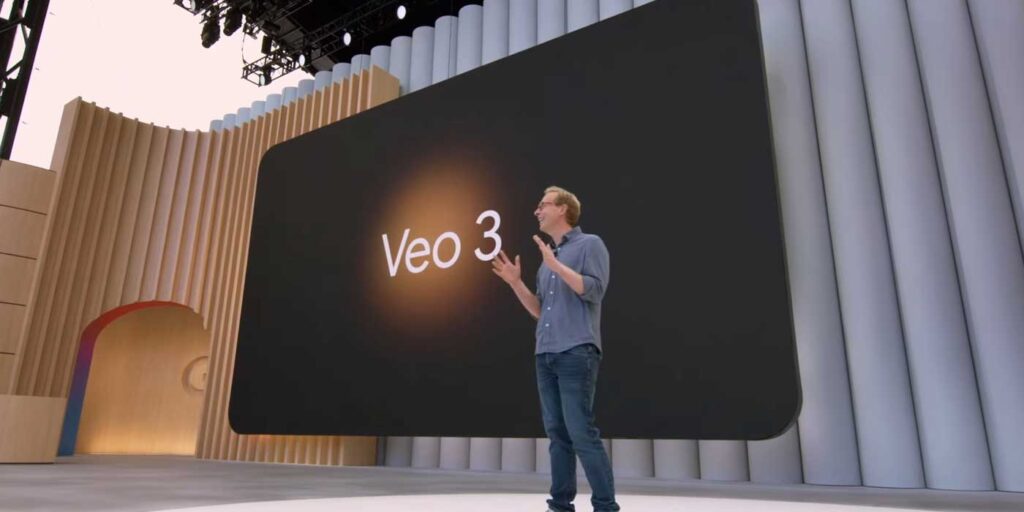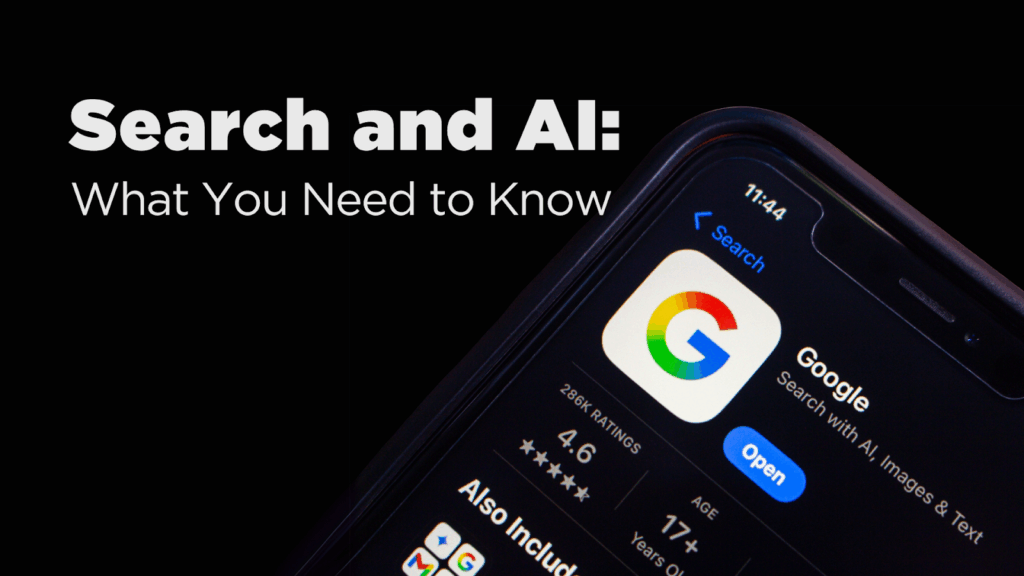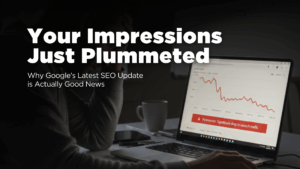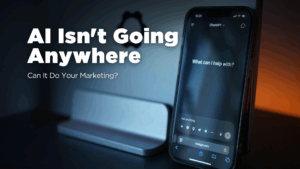At Google I/O 2025, CEO Sundar Pichai revealed that Google now processes 480 trillion AI tokens per month – a 50× jump from last year – and that the Gemini AI app has 400 million monthly users.
Meanwhile, AI Overviews (the AI-powered answer summaries in Google Search) already reach 1.5 billion users each month
This isn’t hype. Google is actively shifting search from links to AI-driven answers. For small and medium businesses, this means your customers will find you differently, and your SEO strategy must evolve to keep up.
Here’s what you need to know—and what to do next.
AI Mode: The New Google Search
Google’s new AI Mode isn’t just a feature—it’s a redefinition of what search is and how it works.
Now rolling out to all U.S. users, AI Mode introduces a conversational, assistant-like experience. Instead of typing simple keyword-based queries, users can ask complex, nuanced, and multi-step questions—and follow up with additional prompts just like they would in a live chat.
AI Mode doesn’t just scan the web for a few matching links. It uses a technique Google calls “fan-out,” where it breaks that broad query into multiple sub-questions, finds relevant answers across different sources, and synthesizes a complete, coherent response—within seconds.
This is what Google means when it calls AI Mode its “most powerful AI search yet.” It leverages advanced reasoning, cross-referencing, and multimodal understanding (meaning it can process text, images, and soon, video or even audio) to generate intelligent results.
In effect, search becomes less about clicking links and more about getting answers directly from Google’s AI.
So how does Google choose which content to use?
Rather than surfacing entire webpages, AI Mode extracts specific paragraphs, sentences, or data points that directly answer the user’s question. The AI is trained to scan content the way a knowledgeable human would—looking for clarity, relevance, and authority. If your content provides the best, most direct answer, it may be cited and shown at the top of results, even if your domain wasn’t ranking #1 before.
To meet this new standard, content needs to evolve:
- It must be clear, specific, and purpose-built to answer real user questions.
- It should be structured in a way that AI can easily parse—using headings, bullet points, and concise language.
- It must be factually accurate, deeply informative, and aligned with the intent behind the query.
Using structured data—like FAQ or Q&A schema—is increasingly essential. These markup formats help Google’s AI understand exactly what your content is answering, which boosts your chances of being cited or surfaced as part of an AI Overview.
In short, content that used to compete for a blue link is now competing for direct inclusion in the answer itself. If your content doesn’t get picked up by AI Mode, you may be completely skipped over—even if you were ranking well before.
This is a critical shift in search visibility. The businesses and publishers that adapt early will lead in this new landscape. Those who don’t may find their organic traffic quietly disappearing.
Visual Search & “Search Live” Are Redefining Discovery
Search is no longer just about typing—it’s about seeing.
Google Lens, the company’s visual search tool, is growing faster than almost any other feature in the ecosystem. Over the past year, Lens usage surged by 65%, now powering more than 100 billion visual searches annually, and reaching 1.5 billion users per month.
And Google isn’t stopping there.
With the launch of Search Live—part of Google’s broader Project Astra—users can now interact with Google Search in real time using their camera. Think of it as a video call with AI: point your phone at a product, menu, or storefront, ask a question out loud, and get instant answers.
This is no longer a futuristic demo. This capability is coming to Android devices soon, and when it does, it’s going to fundamentally change how people discover information in the physical world.
To leverage visual search, make your business visually discoverable. Optimize your images and videos carefully: use high-resolution photos of products or locations, and write descriptive alt text and captions. Google specifically emphasizes using high-quality images and videos in content for AI search. If you sell products, add them to Google’s Shopping graph with clear images and metadata. For example, Google’s new AI shopping can let users virtually “try on” your apparel by uploading a photo. If your images and products aren’t findable by Lens or Search Live, you’ll miss out on this huge, growing audience.
Agentic Shopping & “Agent Mode”
Google is also making search actionable. In AI Mode, Google showed how users can ask the AI to handle tasks end-to-end – like “find affordable tickets to Saturday’s game” – and it will scour sites, compare options, and even fill in forms for them. They’re calling this the agentic capabilities (Project Mariner).
Picture this: a user asks,
“Find me affordable tickets to Saturday’s Dodgers game, and book them for me.”
With Agent Mode, Google parses the request, searches ticketing platforms, compares options, filters based on preferences (like seat location or price), and even fills out forms—completing the purchase via Google Pay. The user simply approves the final option.
This goes beyond helpful—it’s transformational.
Shopping Just Got Smarter (and More Competitive)
Agent Mode also extends to e-commerce. Google’s AI combines the Shopping Graph (with over 50 billion product listings) and Gemini’s reasoning capabilities to create a more intelligent buying experience. Now, a user might ask:
“Show me water-resistant travel backpacks under $100 that fit in an overhead bin.”
AI Mode immediately displays a panel of product images, specs, reviews, and pricing—filtered in real time based on the request. As the user interacts, the AI refines the results. And when they’re ready to buy, agentic checkout finalizes the purchase—without jumping between tabs or entering credit card info manually.
The customer journey has been compressed from search-to-checkout in a single AI-powered interface. Which means:
If your products aren’t easily findable, fully detailed, and ready for AI checkout, you won’t be part of the journey at all.
How to Prepare Your Products for Agent Mode
To stay competitive in this new paradigm, you need to meet Google’s AI where it lives. Here’s how:
- List products on Google. Sync your catalog to Google Merchant Center and use Product structured data. Google’s AI shopping tool uses the Shopping Graph to surface products.
- Enable virtual try-on. Google now allows users to virtually try on apparel by uploading a photo. If you sell clothing or cosmetics, integrate AR try-on tools (on mobile or social) so customers can see your items on themselves.
Support Google Pay and price tracking. The new agentic checkout lets AI buy for users (with “track price” alerts). Ensure your e-commerce flow supports Google Pay and dynamic pricing.

AI Content Creation Tools
Google unveiled new generative models that supercharge content creation. Veo 3 (video) can now generate videos with audio – ambient sound or even characters speaking – from text prompts. Imagen 4 (images) creates ultra-realistic pictures with remarkable detail (fine fabrics, water droplets) and up to 2K resolution. These tools are available in Gemini and Google AI services, letting you quickly produce marketing visuals.
This changes the game for marketing content. On one hand, you can use these AI tools to generate graphics or videos (e.g. product demos, social posts) much faster than before. On the other hand, everyone will have access to better-looking content, so the bar is raised. Experts predict that with AI content booming, only truly valuable and unique content will stand out. In practice, use Imagen and Veo to experiment and brainstorm, but always inject your unique value (brand voice, real data, creative storytelling). High-quality, original content will perform best in the AI-powered search results.

The Next Frontier: AR Glasses
Google also teased its AR future. It shared a preview of Android XR glasses (Project Astra), showing prototype smart glasses that display Google Assistant info and even do live translation. Google is partnering with eyewear brands like Gentle Monster and Warby Parker to design AR glasses you’d want to wear all day.
This isn’t something you have to implement today, but keep it on your radar. In a few years, people might search or shop via wearable AR screens, not just phones. To prepare, make sure your local business data is up-to-date (Google Business Profile) and watch for new AR capabilities from Google.

Preparing Your Business for AI Search
AI search isn’t coming—it’s already changing the rules. At this point, the question isn’t if you’ll adapt. It’s how fast.
By now, you’ve seen how Google is turning search into a conversation, a camera experience, even a shopping assistant. So what’s next for businesses who want to stay visible—and competitive?
It’s time to stop thinking in terms of keywords and rankings alone. Success in AI-driven search is about being useful, being trusted, and being chosen by AI.
Shift Your Strategy from SEO to AEO—Answer Engine Optimization
Your goal isn’t just to appear on results pages anymore. Your goal is to:
- Be the direct answer in an AI Overview
- Be the trusted source in a camera-based interaction
- Be the selected product in an autonomous agentic checkout
That means your content, product data, and customer experience all need to work together. It’s no longer enough to optimize pages—you have to optimize your presence across all AI surfaces.
Embrace AI-Driven Content & Discovery as a Feedback Loop
Google’s tools are no longer passive. They’re interactive, visual, conversational—and they learn from engagement.
That means:
- The more your content gets picked up in AI Mode, the more visible it becomes.
- The better your visuals perform in Lens or Search Live, the more preference Google gives to your media.
- The smarter your product listings are, the more often the AI assistant will choose you.
This is not a one-and-done optimization game. It’s an ongoing feedback loop, where iteration and experimentation are key.
The Real Differentiator: Your Brand’s Expertise & Voice
AI-generated content is everywhere. What stands out now is:
- Original insights
- Firsthand experience
- A clear, confident point of view
- A brand identity that feels human—even inside a machine-generated answer
If you want AI to favor your business, you need to sound like a trustworthy expert with something real to say.
This isn’t just a new channel. It’s a new reality. And businesses that adapt early will own the advantage.
That’s why we’ve launched Generative Engine Optimization (GEO): a next-generation service designed to help brands thrive in a world where AI is the gatekeeper of discovery. Traditional SEO is no longer enough. With AI Overviews, voice-based search, and conversational agents reshaping how people find and trust information, brands need to do more than rank—they need to be referenced, recommended, and cited by AI.
GEO focuses on exactly that. Our approach includes:
- Training AI systems to recognize and reference your brand inside summaries
- Structuring content for retrieval, summarization, and voice-search readiness
- Benchmarking your AI search presence against industry competitors
- Creating content that’s not just optimized for people, but also for the way AI reads, interprets, and responds
We’ve also embedded AI across everything we do—from predictive media buying to content generation to internal training on prompt engineering and model refinement. It’s not about chasing trends. It’s about staying one step ahead for our clients.
If you’re unsure how ready your content, product data, or customer journey is for this new world, our team can help. Let us audit your current strategy—and help you lead in the AI-powered search era.




